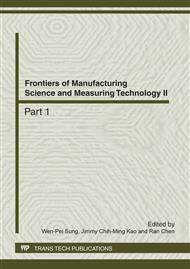p.794
p.798
p.802
p.805
p.809
p.813
p.819
p.824
p.828
Calculating Method about the Normal Clearance Magnitude of the Water Pump Shroud by the Boundary-Layers Theory
Abstract:
The Normal clearance magnitude of the shroud in the engine cooling pump influences greatly on the performance of the pump. As yet there has been no any appropriate theory on it. The dimension of the clearance is now designed depending on plentiful experiments which may consume a great deal of manpower, materials and funds. The boundary-layers in shroud clearance of impeller can be considered as 3D symmetrical and rotational boundary layers which can be converted into 2D boundary by coordinate conversion. Then the Boundary-layers thickness in clearance can be calculated by the more mature method of computing 2D boundary-layers thickness. This method first breached conventional experiment way in determine the shroud clearance magnitude and supplied scientific theory to the engineering design. As a result, this method can save many of all kinds of the industrial resources, and give the more precise scientific reference to relative research about pump.
Info:
Periodical:
Pages:
809-812
Citation:
Online since:
April 2012
Authors:
Price:
Сopyright:
© 2012 Trans Tech Publications Ltd. All Rights Reserved
Share:
Citation:


